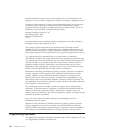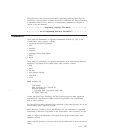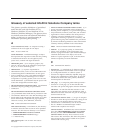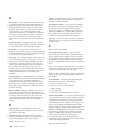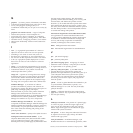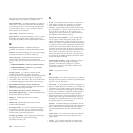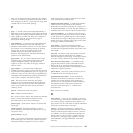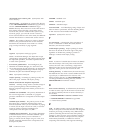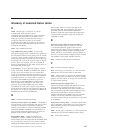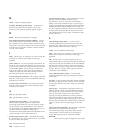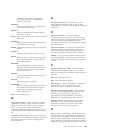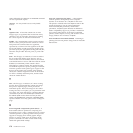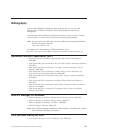reformatted Xerox resource path. Synonymous with
metrics directory.
resource group. In InfoPrint XT, resource files that are
in the %PDXTWORKDIR%\resources\resgrp directory
and the %PDXTWORKDIR%\resources\resgrp\
metrics
directory. These resources are the AFP resource
files and the metrics files that correspond to Xerox
resources that you have loaded on the system. Using
resources groups, you can load several versions of
Xerox resources that have the same names, but different
internal characteristics. Contrast with common resource.
rotation. The number of degrees to rotate a character
relative to the print direction. One of four directions
that define the orientation of text relative to a sheet,
page, overlay, text block, or page segment.
S
segment. Synonymous with page segment.
server. In InfoPrint Manager, the object that accepts
configuration, management, and printing requests, does
the requested operations, and sends responses back as
a result of the operations.
ServerName_JobIdentifier. An unambiguous job
identifier. In InfoPrint Manager, it is the name of the
server that manages the job, followed by an underscore,
_, and a 10-digit, generated integer. This ID uniquely
identifies the job in the InfoPrint Manager server.
sheet. Synonymous with form.
simplex printing. Pertaining to printing on only one
side of the paper. Contrast with duplex printing.
SPOOL (Simultaneous Peripheral Operations
On-line). Auxiliary storage used as a buffer storage to
reduce processing delays when transferring data
between peripheral equipment and the processors of a
computer.
standard error (STDERR). The primary destination of
the error messages that a command or a program
generates. Standard error corresponds to file descriptor
two; fd2.
standard input (STDIN). The primary source of data
that enters into a command. Standard input comes
from the keyboard unless you use redirection or piping,
in which case the input can be from a file, or from the
output of another command. Standard input
corresponds to file descriptor zero; fd0.
standard output (STDOUT). The primary destination
of data that comes from a command. Standard output
goes to the display unless you use redirection or
piping, in which case the output can go to a file, or to
another command. Standard error corresponds to file
descriptor one; fd1.
STDERR. Standard error.
STDIN. Standard input.
STDOUT. Standard output.
structured field. A self-identifying string of bytes and
either its data or parameters; the basic building blocks
of AFP resources and formatted AFP output.
superuser. Synonym for root user.
T
text orientation. A description of the appearance of
text as a combination of inline directions, baseline
directions, and character rotation.
tumble duplex printing. Duplex printing for sheets
that are to be bound on the short edge of the paper,
regardless of whether the printing is portrait or
landscape. Contrast with duplex printing.
W
ward. A section of a double-byte character set (DBCS)
font. The first byte of all code points in the character
set have the same value. Converting a single Xerox
DBCS font creates several character set files and code
page files, with a pair for each ward in the font.
working directory. In InfoPrint XT, the main directory
that InfoPrint XT uses when it creates subdirectories for
a specific job, or subdirectories for resources. The
default working directory is %PDXTWORKDIR%. You
can change the default working directory with the
PDXTWORKDIR environment variable.
X
Xerox resource directory. In InfoPrint XT, the directory
in which it stores copies of all the Xerox resources that
you load successfully. The Xerox resource directory is
one of these:
v %PDXTWORKDIR%\resources\common\xrxres
v %PDXTWORKDIR%\resources\resgrp\rxres
v C:\OtherDirectory\xrxres
Z
z/OS. An IBM operating system for the IBM zSeries
family of enterprise servers that includes and integrates
functions previously provided by many IBM software
products (including the MVS and OS/390 operating
systems). z/OS is an open, secure operating system for
the IBM zSeries family of enterprise servers, complies
with industry standards, is enabled for network
computing and e-business, and supports technology
164 InfoPrint XT Guide
|
|
|
|
|



